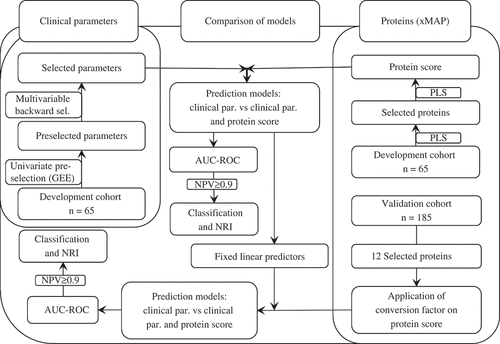Figures & data
Table 1. Baseline characteristics of development (n = 65) and validation cohort (n = 185) before multiple imputation.
Table 2. Models for (baseline) prediction of response in development cohort (n = 65).
Table 3. Risk categories for probability on European League Against Rheumatism (EULAR) good response in the development cohort (n = 65).
Table 4. Risk categories for European League Against Rheumatism (EULAR) good response in the validation cohort (n = 185).
Table 5. Non-exhaustive overview of studies with a proteomic approach to identify baseline predictive proteins regarding response to tumour necrosis factor-α inhibitor (TNFi) treatment.

